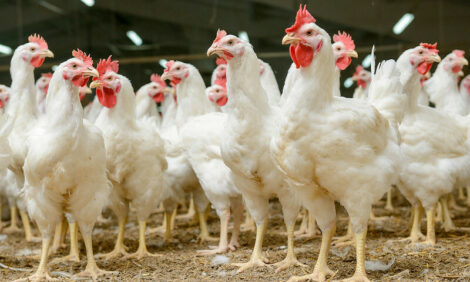



Mexico Reports Two HPAI Outbreaks
MEXICO - The Mexican veterinary authorities have reported two new outbreaks of highly pathogenic avian influenza (HPAI) at farms located in Aguascalientes.The World Organisation for Animal Health (OIE) received an immediate notification on 9 January 2013. The outbreak was initially observed on 3 January and confirmed 7 January. The causal agent has been identified as HPAI virus, seroptype H7N3.
A total of 284,755 birds were found susceptible, out of which approximately 2,990 cases were identified. 740 deaths were reported. A total of 284,015 birds were taken to slaughter.
The source of the outbreaks has not yet been determined.
According to the OIE, the last outbreak of highly pathogenic avian influenza serotype H7N3 occurred in September 2012 in the northeastern part of the State of Jalisco. Following control and eradication measures, passive and active surveillance was strengthened and on 3 January 2013 SENASICA was informed of an increase in mortality and a decrease of egg production on a commercial layer farm in the State of Aguascalientes.
Timely notification from the farmer and surveillance activities allowed immediate depopulation of the two affected production units, reason why both outbreaks identified are closed.
The first outbreak had a population of 146,755 birds aged 21-80 weeks, of which 2,990 sick and 740 dead. Clinical signs were conjunctivitis, edema, cyanosis and palpebral, comb and chin swelling as well as opisthotonos and sudden death. Additionally, during post-mortem inspections, hemorrhages were identified in trachea, lungs and tonsils.
Control measures included vaccination of laying and breeding hens within the zone around the outbreaks and the buffer zone and the strengthening of biosecurity and control of poultry goods movements.
The second outbreak was detected during active surveillance conducted in the State of Aguascalientes and the virus was isolated in another commercial layer farm with a population of 138,000 birds over 81 weeks old, which was also depopulated.
In both outbreaks, cleaning and disinfection of facilities and equipment as well as destruction of hen manure have been carried out. After depopulation, sentinel birds will be introduced in order to confirm the absence of infection and viral circulation.
Active and passive surveillance continues at national level.
Epidemiological investigation is on-going.
Further ReadingYou can visit the Avian Flu page by clicking here. |








